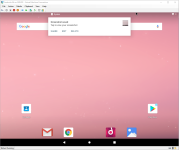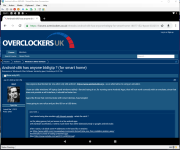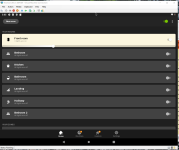Has anyone dual booted (or one-shot run) x86 android - https://www.android-x86.org/ , as an alternative to using an emulator.
I have an older windows XP laptop (and windows tablet) I fancied trying it on, for running some Android Apps, that will not work correctly with an emulator, since that does not provide a wifi interface, it should be faster too.
Apps like those that communicate with smart devices, hue/sengled.
I was going to use rufus and put the ISO on a USB drive.
I have an older windows XP laptop (and windows tablet) I fancied trying it on, for running some Android Apps, that will not work correctly with an emulator, since that does not provide a wifi interface, it should be faster too.
Apps like those that communicate with smart devices, hue/sengled.
I was going to use rufus and put the ISO on a USB drive.
Just started using Nox emulator with Nougat upgrade - whats the catch ?
not for plaing games, but just access to a few android apps.
with hardware acceleration, it seems much faster than either bluestacks/Andy or googles android studio.
After it starts, I do block some IP addresses in the hosts file, in windows
per https://www.reddit.com/r/noxappplayer/comments/5nmoyf/stop_nox_from_installing_random_apps/
theoretically to avoids it loading unwanted apps.
[also https://www.youtube.com/watch?v=vyQK2oIJvug]
The above article suggests blocking in both windows, and rooted android, but, I cannot find a free hosts editor for android,
and have not yet researched a better technique.
Anyway has anyone had any problems with it ??








 .
.